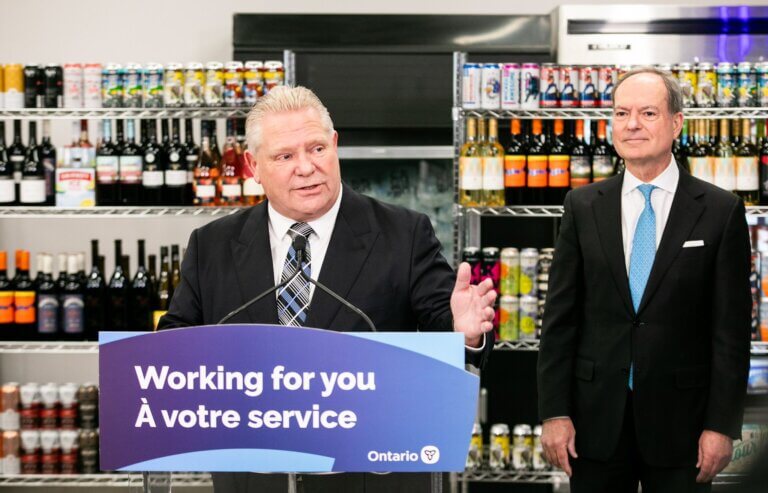
Ontario Launches New Tools to Help Prevent Human Trafficking
These educational resources are part of the government’s plan to raise awareness and stop this crime before it happens
The Voice of Canada News:
BRAMPTON – As students prepare to head back to school, the Ontario government continues to raise awareness about sexual exploitation and human trafficking among children and youth. Two new educational resources launched today will help prevent human trafficking by teaching kids how to recognize if they are being targeted by a trafficker and making sure they know where to get help. These new tools are part of the province’s $307 million comprehensive anti-human trafficking plan.

“Young people across Ontario need to know what human trafficking is and how it happens, so they can stay safe,” said Jill Dunlop, Associate Minister of Children and Women’s Issues. “With grooming occurring at such a young age, it is vital to educate our children and youth. These tools can give them the knowledge to spot the danger signs, teach them the skills to avoid it, and point them to help if they need it – so we can stop this crime before it happens.”
The new tools are designed to provide innovative ways to actively engage youth in discussions about human trafficking and provide culturally-specific resources for Indigenous communities. They respond directly to needs identified by frontline service providers, survivors of human trafficking and Indigenous communities and organizations.

“Speak Out: Stop Sex Trafficking” is an Indigenous-focused anti-human trafficking educational campaign, designed by and for Indigenous people, that provides information about sexual exploitation and human trafficking – how to recognize it, why Indigenous people may be particularly vulnerable to being targeted and where to go for help. Resources include a website, downloadable materials for distribution in communities, and culturally relevant activities to help leaders and caregivers facilitate conversations with youth, to raise awareness and provide support.

“The Trap” is a Human Trafficking Digital Education Tool designed to raise awareness about sex trafficking among middle and high school-aged children and teens. The interactive tool allows youth to experience what it feels like to be targeted and recruited by a sex trafficker through an immersive chat experience. It features scenarios based on real-life experiences and with the support of an adult facilitator, youth learn the skills they need to stay safe.
“Human trafficking is a serious crime that is on the rise across Ontario and we are committed to holding human traffickers accountable,” said Solicitor General Sylvia Jones. “Building education and awareness of how human trafficking happens can help protect our children and youth from predatory activity. These new tools are vital components of our government’s comprehensive plan to combat human trafficking, bring traffickers to justice and end this heinous crime.”
The tools released today complement Ontario’s updated Health and Physical Education curriculum for grades 1-8 implemented last September. This new curriculum also equips children with important skills to help protect themselves against sex trafficking. These new tools also respond directly to Calls for Justice of the National Inquiry into Missing and Murdered Indigenous Women and Girls to develop and implement awareness and education programs for Indigenous children and youth on the issue of sexual exploitation.
“As we start another school year, it is critical to help students learn the skills to maintain healthy relationships, to identify and respond to exploitative and coercive behaviour, and how to seek help,” said Stephen Lecce, Minister of Education. “That is why our government updated the elementary Health and Physical Education curriculum by including mandatory learning about online safety and consent to keep kids safe and directly respond to the growing threat of human trafficking.”
Raising awareness about human trafficking is a key commitment in Ontario’s new strategy to combat human trafficking and child sexual exploitation. Announced in March 2020, the strategy will invest $307 million over the next five years on a comprehensive plan to raise awareness of the issue, protect victims and intervene early, support survivors and hold offenders accountable.

QUICK FACTS
Over two-thirds of police-reported human trafficking violations in Canada occur in Ontario.
More than 70 per cent of known human trafficking victims identified by police are under the age of 25 and 28 per cent are under 18.
The average age of recruitment into sex trafficking is 13 years old.
Young women and girls are particularly vulnerable, especially those from Indigenous communities and children and youth in care, though boys, men and people who are LGBTQ2S are also targeted.
The new awareness resources released today were developed with input from Ontario’s Human Trafficking Lived Experience Roundtable, made up of survivors who share their perspectives on initiatives to combat human trafficking in Ontario.
The Ministry of Education provided funding to White Ribbon to create digital resources aligned with the Ontario secondary school curriculum. These new resources contain eight secondary-level lesson plans to prevent child sexual exploitation and sex trafficking and explore key topics like online safety, healthy relationships, consent, and building healthy masculinities.


